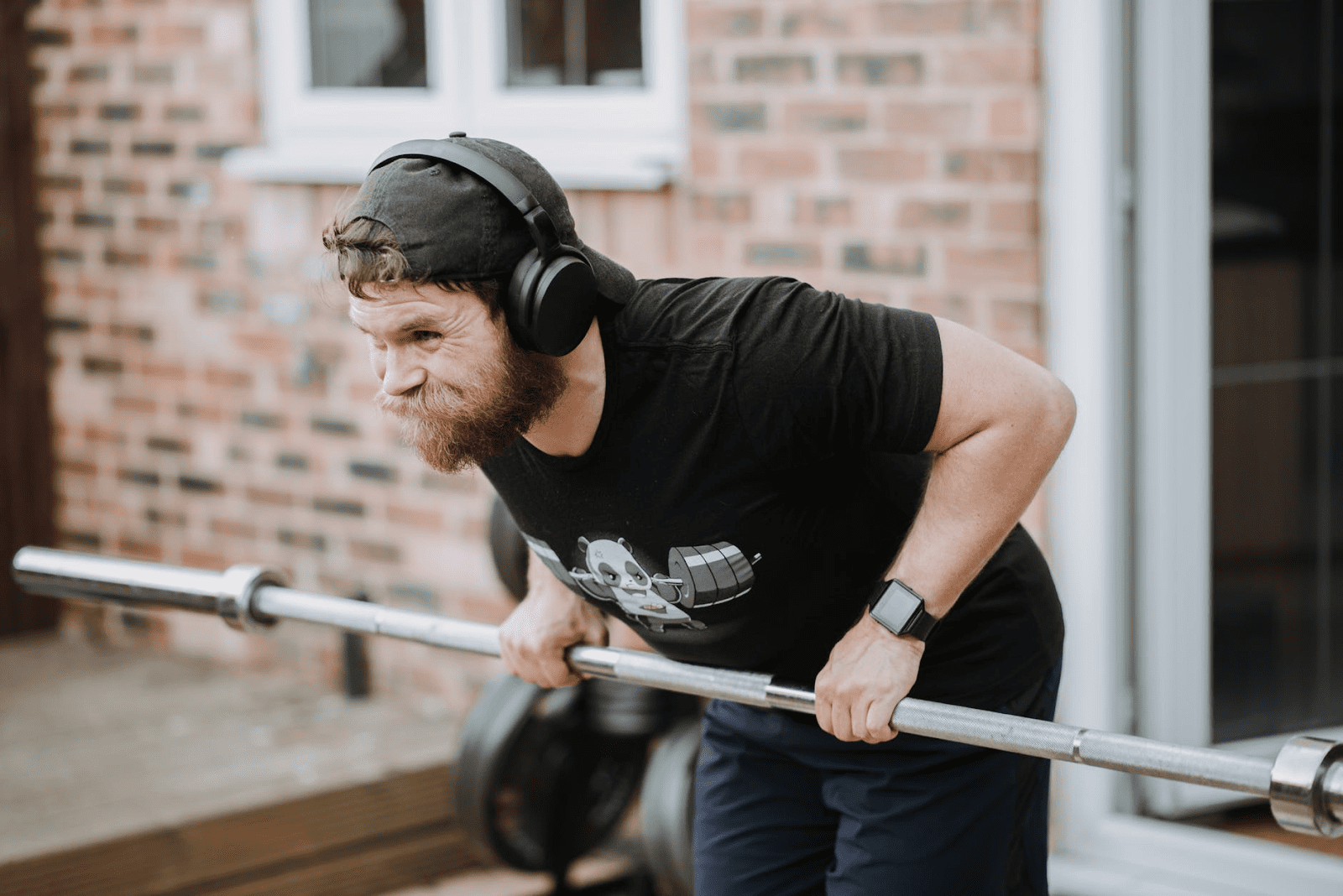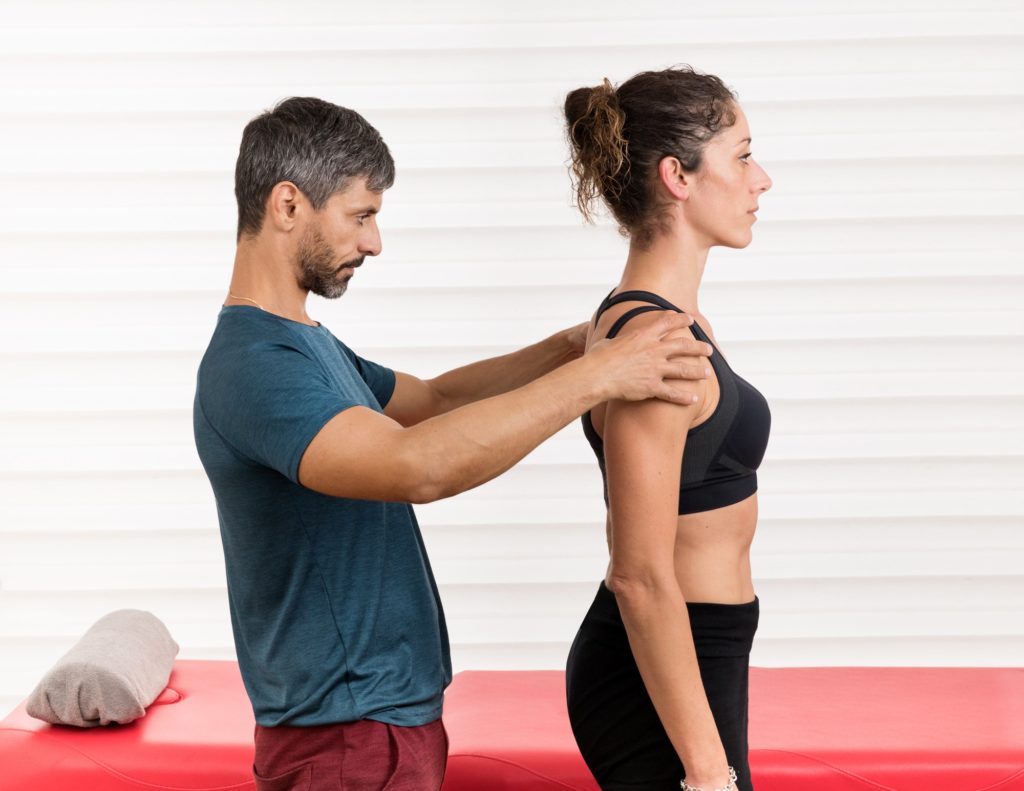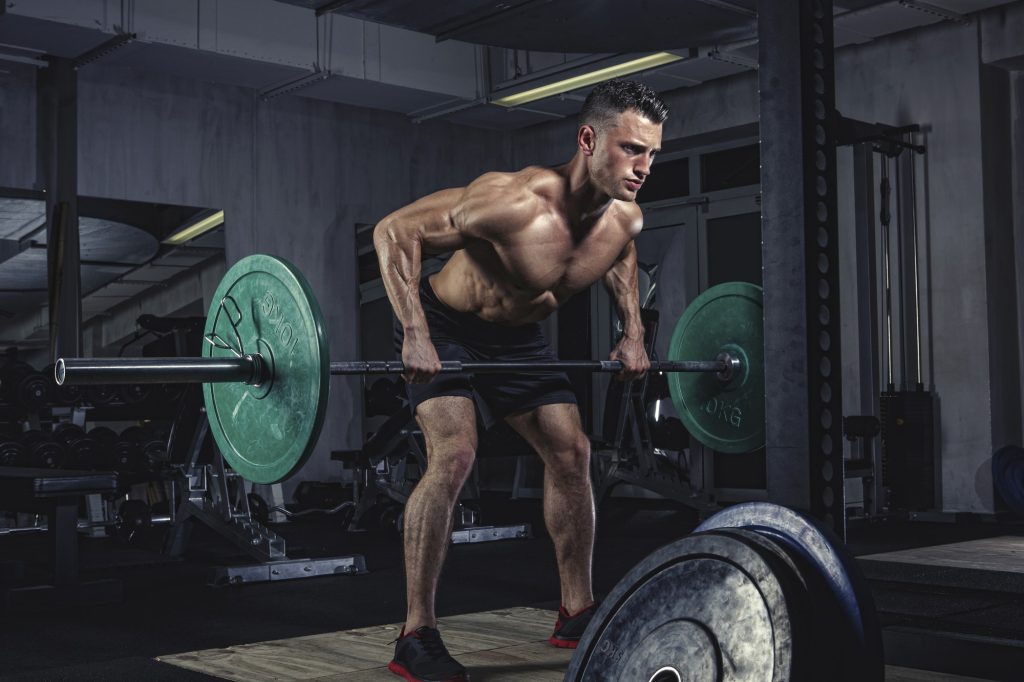There’s something exhilarating about the feeling of a barbell in your hands. The bar resonates with a sense of strength and power. There’s a quote, “the iron never lies,” which resonates with powerlifters, Crossfitters, and Olympians alike.
As such, it’s no surprise that many lifters love using barbells to help them build a strong back. Here are some of the best barbell back workouts and why you should add them to your strength training routine.
Back Anatomy 101
Before you jump into targeted back exercises, it’s helpful to understand the basic anatomy involved. Here’s a high-level overview of your back muscles.
- Trapezius – Found at the top of your back, connecting your skull, shoulders, and spine. Elevates and rotates the scapula during arm abduction. I.e., your shrugging motion comes from the traps.
- Latissimus Dorsi – spans over the lower back to middle back, connecting your arms and ribs to your spine. Responsible for aiding in arm movement. Your lats are what make your back look wide and beastly.
- Rhomboids – consisting of two muscles, the rhomboid major and the rhomboid minor. Connects the scapula to your spine and helps with retraction and rotation. I.e., when you pull your shoulder blades together to bench or row, your rhomboids help.
- Levator scapulae – this small muscle connects your shoulder to your skull and helps with scapular elevation (in other words, it’s how you lift your arm upward).
- Serratus – comprised of two muscles, the serratus inferior and serratus superior lying under the lats and rhomboids, respectively. These muscles attach the ribs to the spine and aid in rib depression and elevation.
- Erector spinae – this group of muscles run along your spine and aid in back extension. This group is also considered an integral part of your core muscles.
In summary, your back is a complex machine. While most of your back muscles will be engaged during barbell workouts, the superficial musculature— traps, lats, and rhomboids— are the target for definition and growth.
Benefits of Back Training

Source: https://www.pexels.com/photo/strong-bearded-man-lifting-heavy-barbell-4793200/
Targeted back training offers several benefits to athletes of all backgrounds and levels. While there’s plenty to be said for full-body workouts, specifically training this complex group of muscles is worth the dedicated time and effort.
Here are some of the main benefits of back training.
Reduced Back Pain
Did you know that at least 16 million adults in the US experience chronic or persistent back pain each year? There’s a common misconception that weight training can hurt your back, and that’s true in some cases. If you experience acute back pain (i.e., a new injury), your body needs rest to recover. Similarly, if you let your ego do the lifting and go too heavy without practicing proper form, then yes, you’ll hurt your back.
When done properly, back workouts can strengthen the back muscles and help mitigate chronic pain. As a personal anecdote, this writer dealt with debilitating tension headaches as a result of a serious prior injury and leaning over reports at a desk all day (here’s looking at you levator scapulae). After a few months of lifting weights, I no longer had to go for weekly deep tissue massages, and the pain was mostly gone.
That said, if you have a back injury, you should work with a specialized personal trainer and start with bodyweight exercises before hitting the weights.
Improved Posture
Sitting at a desk all day is terrible for your posture. As you hunch forward for extended periods, your anterior muscles and ligaments become shortened, putting stress on your posterior muscles. The same occurs if you over-train your chest without also training your upper back. Taking the time to build muscle in your back will help create balance in your upper body and improve your posture.

Helpful for Cross-Training
Whether you’re into running, bodybuilding, weightlifting, or competitive sports, there’s no form of movement that won’t benefit from back training. Your back muscles aid in stability and strength, benefiting both athletic endeavors and activities of daily living.
Builds a Physique
Functionality aside, if your goal is to make your back look as monstrous as possible, adding focused back training to your workout routine will make it happen.
Benefits of Barbell Training
Now that you understand the benefits of back training let’s briefly touch on the benefits of barbell training.
Using free weights (barbells or dumbbells) provides a level of instability that isn’t offered with cable machines. This instability improves the activation of those secondary stabilizer muscles for a more robust compound exercise.
Barbells are surprisingly versatile. While you won’t achieve isolation of the muscle group, you can adjust your grip or your range of motion to shift the focus of your workout routine. Additionally, you can use a barbell for a light warm-up or hit some seriously heavy weights, all with one core piece of equipment.
Without further ado, here are the best barbell exercises to build a strong back.
Deadlifts
Yes, deadlifts are an obvious barbell back exercise that you already knew, but it’s worth mentioning. Deadlifts are a whole-body exercise, engaging the posterior chain from start to finish. However, the upper part of the pull engages both your lower and upper back muscles, so we can’t leave barbell deadlifts off the list.
How to:
- Stand with your feet hip-width apart, barbell over the middle of your foot.
- Grab the bar with a mixed or overhand grip with hands placed shoulder-width apart.
- Hinge your hips back, allowing your knees to bend without extending over your feet, until your shins touch the bar.
- Pull your shoulder blades together, brace your core, look ahead, and stand up while holding the weight.
- Lock your hips at the top of the movement and squeeze your glutes. Pause, then reverse the movement, lowering the barbell to the floor with control. That’s one rep.
Your starting position and setup may look different based on your unique body mechanics and technique. You can also use rack pulls to shift the focus more to the back muscles while limiting the leg muscle groups.
Good Mornings
Barbell good mornings are often overlooked. However, this is one of the best back exercises for muscle growth while teaching proper hip hinge movement patterns. In addition to targeting the lower back muscles and strengthening the erector spinae, this effective back exercise also strengthens the hamstrings and glutes.
How to:
- Set up a barbell in a rack at the same height you’d use for back squats (approximately at armpit level).
- Face the barbell and step under, allowing the bar to rest along the muscles of your upper back. Grab the barbell with an overhand grip, hands placed as needed for mobility.
- Unrack the bar and step backward until you have room to bend.
- Place your feet hip-width apart and settle. Brace your core, engage your lats, take a breath, and allow your hips to hinge back as you lean forward. Your legs should remain straight with a slight bend in the knee.
- Maintain a neutral spine as you move to the limit of your range of motion, approximately a 30-45 degree angle from the floor.
- Pause, and squeeze your glutes to reverse the movement until you’re standing fully erect. That’s one rep.
This is a surprisingly challenging lift that requires equal weight distribution on your feet and slow, controlled movement. Beginners should start with a bodyweight good morning or resistance band variation before adding weight.
Barbell Row Variations
Barbell rows are a foundational back exercise. They engage all the muscles in your upper back as well as the rotator cuff and rear deltoids. You’ll also rely on your core, glutes, and hamstrings for stability.
Let’s cover the bent over barbell row and touch on three variations.
How to:
- Stand with your feet hip-width apart, barbell over the middle of your foot.
- Grab the bar with an overhand grip with hands placed just outside shoulder-width.
- Hinge your hips back, allowing your spine to be parallel with the floor and your chest over the bar.
- Brace your core and pull the barbell to your chest, keeping your elbows tucked.
- Reverse the motion until your arms are extended. That’s one rep.
Pendlay Row
The pendlay row is a bent over row variation in which you allow the barbell to rest on the floor before starting the next rep. The movement patterns are the same, but you get the added benefit of lifting a dead weight.
Seal Row
For this barbell row variation, you lay on a bench with the barbell placed perpendicular underneath you. Lifting your feet off the floor allows you to isolate the back muscles rather than engaging the legs and core.
Inverted Row
Rather than pulling the bar to you, you’ll pull yourself to the bar. To try this bodyweight row, place the barbell in a low rack, and position yourself underneath. Keep your core strong and pull yourself up until your chest reaches the bar, keeping your heels glued to the floor. This variation is a powerful pull-up progression as well.
Suitcase Lift
If you’re sick of rows and deadlifts, change things up with a suitcase lift. This single-arm barbell workout will help you improve stability, grip strength, and upper body strength. The suitcase lift functions similarly to a hex bar deadlift, only with a unilateral focus and broader range of motion. The suitcase lift targets your lower back and core.
How to:
- Stand with a barbell perpendicular to your body, with your right leg aligned with the middle and feet shoulder-width apart.
- Brace your core, pull your shoulder blades together, and tuck your chin as you hinge your hips back and grab the bar with your right hand.
- Keeping your arm extended, push through the floor evenly with both feet, and stand up straight while holding the bar. You can stretch your other arm outward for balance and stability.
- At the top of the movement, lock your hips and squeeze your glutes. Pause, then reverse the movement until you reach the starting position to complete the rep. Do all your reps on one side before switching.
Keep your core braced, and don’t shift your hips as you complete this movement. Beginners can try with a kettlebell or dumbbell for practice before progressing to a barbell.
Barbell Farmer’s Carry
As a progression of this movement, use your first rep as an opportunity to start moving. Once you’re fully extended, walk while carrying the barbell for a farmer’s carry to really target your core, back, and hip stabilizers.
Conclusion
With these eight barbell back exercises and variations, you can build muscle mass, strength, and definition. The benefit of these compound exercises is that they work both the larger muscle groups and the small stabilizers for full-body functional strength. Remember to take your time and prioritize proper form to prevent injury.

